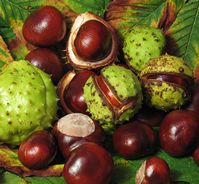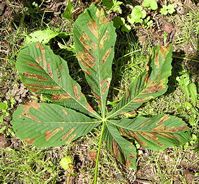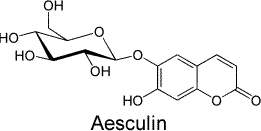
On 29 September we joined the Professional Horticulture Group South West to visit specialist soft fruit grower, New Forest Fruits. Part of the Faversham based Asplins producer organisation bringing serving growers from Aberdeenshire to Somerset, New Forsest Fruits produce over 2,000 tonnes of strawberries and 100 tonnes of blueberries. A report on this visit will appear in our November newsletter.
Peter Grimbly
Contents
David Miller Bursary Awards
Plant of the Month
News from our Associates
Horticulture Industry News
Events Calendar
Horticulture Group contact details
Related Links
David Miller Bursary Awards
Our AGM on 18 September was followed by the presentation of this year’s David Miller Travel Bursary Awards. These were presented by Prof Paul Hadley of Reading University’s Agriculture, Policy & Development Department.
Before making the presentations, he outlined the history of the University and its current activities. Starting as a college of Oxford University in 1892, Reading has been an independent university since 1926. Initially based in a building near the town centre which still forms a campus. The main university moved out to the Whiteknights campus in the 1960s and the adjacent Earley Gate campus where the Agriculture Policy and Development department is located.
The University is today best known for its work on meteorology and climate change as well as food & health and agriculture. Agriculture and horticulture have been key components of the university from the start and today has the second highest REF score in the university. Horticulture has been a somewhat mobile subject only becoming part of the present department two years ago, a location that clearly suits the subject.
The department today has two main research platforms; agriculture food policy & health; agriculture & food production. It includes a specialised Centre for food security and the Walker Institute, a joint venture between agriculture & meteorology looking at the effects of climate change.
With 2 full time staff supported by 7 research fellows the department specialises in soft fruit technology and the development of novel plastic films. It also has a focus on genetic resources managing the National Fruit Collection at Brogdale in conjunction with the advisory group, FAST. However half their work is on tropical fruits especially cocoa, a crop they have worked on for some 30 years concentrating on the effect of climate on yield and quality. They run the international germplasm database for the crop as well as a quarantine facility where they hold around 400 genotypes and act as the hub through which all international exchange of material takes place. Their latest facilities enable them to emulate cocoa growing climates around the world both now and into the future.
Their landscape work has declined since the departure of Richard Bisgrove but is maintained by an RHS staff member permanently located within the department who works on urban greening.
Prof Hadley then presented certificates to this year’s two award winners, Benjamin Langendorf from the University of York and Idowu Rotifa from the University of Edinburgh. The pictures below show Professor Paul Hadley with Benjamin and Idowu respectively.
Benjamin Lagendorf

However, treated plants showed no benefits from this early inoculation in terms of earlier flowering or yield and his tests on verticillium infection have so far been inconclusive mainly due to the very low levels of infection achieved.
He has studied the effect of mycorrhiza on red core caused by Phytophthora fragariae both on its own and in combination with a plant growth-promoting rhizobacteria (PGPR). The results show no significant effect of either treatment individually but in combination they were effective in reducing the level of red core disease.
Idowu Rotifa

The main control agent is Vydate, and an alternative is urgently needed. Idowu has been looking at a number of plant based elicitors including such things as garlic extract. Some of these have proved effective in early tests and enabled him to narrow down a short-list of potential agents for further experimentation.
Sebastian Eves-van den Akker
One of last year’s winners, Sebastian, kindly returned to update us on progress with his studies into how nematodes have become so successful at attacking plants. In addition to his David Millaer Award last year he has also received a BBSRC Future Leaders Fellowship which we reported earlier this year.
Nematodes that feed on plants apparently adopt one of three strategies; some are ectoparasites simply grazing on the surface; a second group enter the plant and then feed while burrowing through; and a third group attack a single cell which grows large and acts as a food source. It is this latter category that Sebastian is studying.
These nematodes are unusual in that, while most plants and animals survive with one glutathione synthetase enzyme, these nematodes typically have around 30. Detailed study of these enzymes has shown that they are active at trapping amino acids and ATP but for some reason do not process the reaction efficiently. The reason for this inefficiency has so far remained unclear.
However the enzyme usually exsists as pairs of molecules with two identical molecules lying side by side. Sebastian has shown that with 30 variants to choose from heterologous pairs readily form. This large number of potential heterologous pairs may act as a means of confusing the plant's normal defence mechanism for identifying and eliminating foreign invaders.
Plant of the Month
Aesculus hippocastanum, horse chestnut, conker, Hippocastanaceae


Although no-one was told why the conkers were needed the request to collect was extremely successful. Three thousand tons of conkers made it safely to the factory of the Synthetic Products Company in King’s Lynn where the acetone was to be produced. Unfortunately more collected conkers never made it to the factory due to logistical challenges. The production process did not run smoothly either, but by April 1918 acetone was being produced reliably by this process. Almost too late to help the war effort, but better than nothing.
By the Second World War, the production of glucose and acetone from horse chestnuts was established and the raw material had found other uses. Saponin was extracted mainly for soap manufacture but one particular saponin, aesculin, was used by dairy bacteriologists in tests for Streptococcus species. The leftovers were then used as fodder for cattle.
Today, if people think of medicinal uses of the horse chestnut at all, it is more as a herbal remedy than pharmaceutical medicine. The triterpene saponins, known collectively as aescin have proven anti-exudate and venotonic (vascular tightening) activity. The saponins have anti-inflammatory and anti-oedema activities, increasing vascular tone and increasing the stability of capillary veins. Unsurprisingly therefore herbal treatments consisting of horse chestnut extract are used to treat varicose veins, ulcerations and piles.
The information on horse chestnut use in wartime was taken from ‘Britains’s Green Allies: Medicinal Plants in Wartime’ by Peter Ayres.
ISBN 978 1784623 364
Alison Foster
News from our Associates
Commercial Horticultural Association

Royal Society of Biology

UK Plant Science Federation

Horticulture Industry News
For the very latest horticultural news follow us on Facebook,
Twitter, or
LinkedIn
More crop per drop: growing food with less water
Partial root drying allows some crops to be grown using up to half as much water, while producing about the same amount of fruit. Partial root drying works like this: When one side of a plant’s roots are starved of water, signals are sent to the leaves to slow their growth, reducing water use. These signals also tell the plant to close stomata, reducing water loss. Although the growth rate of the leaves declines, because the other side of the plant is being watered, it doesn’t wilt and carries on producing fruit. Alternating which side of the plant receives water prevents roots from dying in very dry soil.
Plant roots may accelerate carbon loss…
Soil may be releasing carbon dioxide to the atmosphere faster than anyone thought. Research has shown that chemicals emitted by plant roots act on carbon that is bonded to minerals in the soil, breaking the bonds and exposing previously protected carbon to decomposition by microbes. The carbon then passes into the atmosphere as carbon dioxide (CO2). This study challenges the prevailing view that carbon bonded to minerals stays in the soil for thousands of years. As these root compounds separate the carbon from its protective mineral phase we may see a greater release of carbon from its storage sites in the soil. As warmer weather and more carbon dioxide in the air stimulate plants to grow, they produce more root compounds. This will likely release more stored carbon, which will enter the atmosphere as CO2--which could in turn accelerate the rate of climate warming.
...while trees go on strike?
Trees, crucial absorbers of climate-harming carbon dioxide gas, may finally be balking at an ever-earlier spring season brought on by global warming. Over the past several decades, trees across central Europe have been steadily sprouting their spring leaves earlier in response to warmer temperatures. As a result, forests absorbed more carbon dioxide in a longer growing season—a boon that has been worked into global warming projections. But a new study shows trees have slowed their pace of seasonal advance—raising fears it may stop altogether. The slowdown suggests a current and possible future weakening of forests' carbon uptake due to the declining temperature sensitivity of trees. For this study, an international team crunched decades of data drawn from seven common types of trees like beech, silver birch and horse chestnut at 1,245 sites in the wild ranging from Denmark to Bosnia. More
How to predict plant size
Scientists have developed a new method which allows them to predict the final size of a plant while it is still a seedling. Thanks to this method, which is based on the knowledge that a set of genes is associated with the final size of a leaf, scientists will be able to significantly accelerate plant breeding programs. The scientists were able to identify this set of genes through advanced and highly detailed analyses. Expression analysis of specific genes will help breeders select the most useful crossing products at a very early stage. More
Caterpillar frass weakens plant’s defence
In a deception that likely has evolved over thousands of years, a caterpillar that feeds on corn leaves induces the plant to turn off its defences against insect predators, allowing the caterpillar to eat more and grow faster. The finding is one more revelation about the myriad of chemical signals that pass between plants and insects. In this case, the agent of deceit is the caterpillar's faeces, or "frass." When these herbivores feed on plants, they not only cause mechanical damage but often deposit substances that can manipulate the plant's response to herbivory. These substances are analogous to the microbial-associated compounds that affect plant responses to pathogenic fungi or bacteria.
Has the GFS programme made a difference?
What has the Global Food Security programme achieved so far? To answer this question, we need to think about what GFS was set up to do – in brief, improve coordination and collaboration on food security research across the public sector. This involves focusing research priorities and agendas around emerging food security challenges; greater coordination and collaboration across stakeholders to improve the design, delivery and translation (into policy, regulation and practice) of research across many disciplines; and engagement and dialogue to ensure that research delivers the maximum benefit to society.
Why such variability?
The estimated 25,000 orchid species outnumber mammals, reptiles and birds combined. Botanists have proposed more than a half dozen explanations for this diversity. Now, research corroborates many of these explanations, but finds no evidence for other logical suggestions, such as that deceitful pollination. It was surprising that many classic characteristics of orchids — the tiny, dust-like seeds, the role of fungi in triggering germination, the fused male-female flower parts that define the orchid flower — did not trigger the acceleration in species formation. By looking at chloroplasts from 39 species, strategically placed throughout the orchid family, then adding genetic data on 150 more species, they were able to create a branching structure that indicated how many million years ago each major group of orchids appeared. Then, based on the numbers of species known in each of these groups today, they were able to calculate the rate of species diversification in each and test the many putative causes of the explosion in orchid species. They found that the factors that most greatly accelerated the formation of new species were life in extensive mountain ranges (like the Andes and New Guinea Highlands); the evolution of epiphytism (life in the trees); pollination by orchid bees, moths, or butterflies; and origin of pollinia (packages of hundreds to thousands of pollen grains dispersed as a unit). More
An apple a day can 'stop muscles wasting away'
A chemical found in the peel of apples can turn elderly people's muscles into those of a young adult after just two months of treatment. Their research found that both apple peel and green tomatoes have natural chemical properties which could turn back time for worn-out muscles. Now the researchers hope the discovery could lead to new therapies targeting pensioners and other older adults enabling them to keep fit and active for longer. Muscle wastage in old age is caused by a protein called ATF4 which changes the formation of genes, starving muscles of the proteins they need to remain strong leading to a loss of mass and, subsequently, strength. But two natural compounds can reduce ATF4 activity. One of those is ursolic acid, which is found in apple peel, and the other is tomatidine, which comes from green tomatoes. Initial tests on older mice show ursolic acid and tomatidine dramatically reduce age-related muscle weakness and atrophy, increasing muscle mass by 10 per cent and 'muscle quality' by 30 per cent after just two months. More
Innate GMO Potato Deregulated By USDA
The U.S. Department of Agriculture's (USDA) Animal and Plant Health Inspection Service (APHIS) announces a determination of non-regulated status for a genetically engineered (GE) potato variety called Innate, which has been engineered for late blight resistance, low-acrylamide potential, reduced black spot bruising, and lowered reducing sugars. The determination will be effective upon publication of the Federal Register notice announcing the decision on September 2, 2015. The breeders used the techniques of modern biotechnology to accelerate the traditional breeding process and introduce new traits by triggering the potato’s own RNA interference (RNAi) pathway. RNAi is a natural cellular process commonly used by plants and animals to modulate expression of certain genes, and has been used effectively in multiple commercial crops sold over the last decade. More
Enigma of the trees that resist wildfires
More than 20,000 hectares of Spanish forest were charred. But in the middle of the devastation, a group of cypresses was still standing tall and green. When a fire swept through an experimental plot in Andilla, in the Spanish province of Valencia in 2012, it gave researchers the perfect opportunity. The plot, which was part of CypFire, a project financed by the European Union, was established during the 1980s to test the resistance of more than 50 varieties of Mediterranean Cypress, Cupressus sempervirens, to a pathogenic fungus. "When we got there we saw that all the common oaks, holm oaks, pines and junipers had completely burnt. But only 1.27% of the Mediterranean Cypresses had ignited." The Mediterranean Cypress has a particular structure of its leaves that enables it to maintain a high water content even in situations of extreme heat and drought, and this is a very favourable starting point concerning fire risk. The cuticle is thick and the stomata are arranged on the inside and protected side of the scale-like leaves and therefore less subject to high water loss. As a result the ignition time of live parts of the Mediterranean Cypress is between one, five and seven times that of other Mediterranean species like Quercus ilex, Juniperus Communis or Pinus Pinaster under the experimental conditions of our tests. The litter on the forest floor, made up of small fragments of leaves, also forms an intricate and compact layer and is slow to decompose. This acts as a 'sponge' and retains water, and the space for air circulation is reduced. More
Events Calendar
Integrated Protection in Field Vegetables
4 - 7 Oct 2015, International Organisation for Biological Control
Hamburg, Germany
Postharvest Loss Prevention
4 - 7 Oct 2015,
Rome, Italy
BCPC Conference
6 - 7 Oct 2015, BCPC
Brighton, UK
Global Food Security
11 - 14 Oct 2015, Cornell University and Columbia University
Ithaca, USA
Applications of Modelling as an Innovative Technology in the Horticultural Supply Chain
11 - 14 Oct 2015, International Society for Horticultural Science
Wageningen, The Netherlands
Global soil biodiversity
13 Oct 2015, James Hutton Institute
Dundee, UK
Soil-Plant-Atmosphere Continuum
13 - 14 Oct 2015, Rothamsted Research
Harpenden, UK
Fundamentals of Global Food Security
14 - 17 Oct 2015
Des Moines, USA
Soils - where the answer lies
15 Oct 2015, Tropical Agriculture Association
Cirencester, UK
National Fruit Show
21 - 22 Oct 2015
Detling, UK
Stress Resilience
23 - 25 Oct 2015, Society of Experimental Biology
Iguassu Falls, Brazil
Plant Molecular Biology
25 - 30 Oct 2015, Brazilian Genetics Society
Iguassu Falls, Brazil
PhenoDays
28 - 30 Oct 2015, LemnaTec
Munich, Germany
Artemisia annua against malaria
29 Oct 2015, Tropical Agriculture Association
London, UK
Oil and Protein Crops Section
1 - 5 Nov 2015, Eucarpia
Antalya, Turkey
Onion and Carrot Conference
4 - 5 Nov 2015
Peterborough, UK
Moringa
15 - 18 Nov 2015, International Society for Horticultural Science
Manila, Phillipines
Biostimulants in Agriculture
16 - 19 Nov 2015, New Ag International
Florence, Italy
Integrated Pest Management
18 - 19 Nov 2015, Association of Applied Biologists
Marston, UK
Soft Fruit Day
25 Nov 2015, East Malling Research & AHDB Horticulture
East Malling, UK
Cell biology at the plant–microbe interface
29 Nov 2015 - 1 Dec 2015, New Phytologist Trust
Munich, Germany
Quality Management of Organic Horticultural Produce
7 - 9 Dec 2015
Ubon Ratchthani, Thailand
The Plant Hunters with Stephen Harmer
9 Dec 2015, East Malling Research
East Malling, UK
Advances in Nematology
15 Dec 2015, Association of Applied Biologists
London, UK
If you would like to advertise a forthcoming event please contact. ester.monfort@soci.org
Horticulture Group Contact Details
For submitting ideas or to volunteer to be part of a committee or a group, please contact:
Chairman - Tony Girard
Meetings Coordinator - Emma Bennett
Minutes Secretary - Margaret Waddy
Newsletter co-ordinator - Sue Grimbly scihortigroup@btinternet.com
Group Contact - Ester Monfort Martinez, E: ester.monfort@soci.org T: +44(0)20 7598 1584

